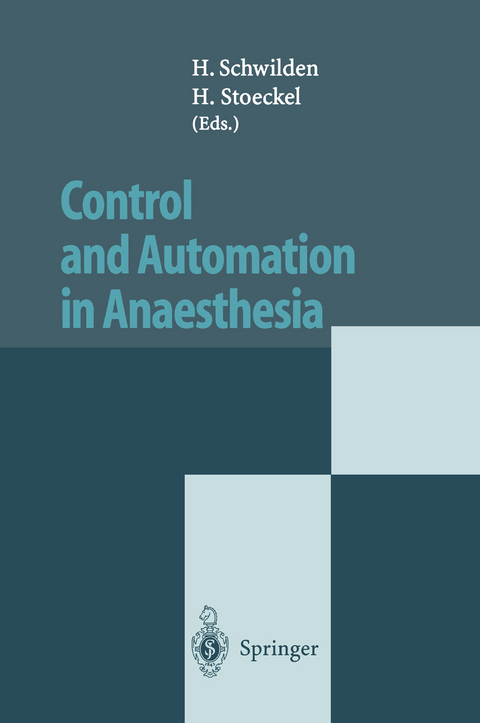
Control and Automation in Anaesthesia
Springer Berlin (Verlag)
9783642795756 (ISBN)
I General Methods of Control and Automation.- Decision Support via Fuzzy Technology.- Principles of Adaptive Neural Networks for Control.- Artificial Intelligence and Expert Systems.- II Assessment and Evaluation of Signals and Measurements.- a) Anaesthesia Machine Monitoring.- Which Monitoring Qualities Ensure Proper Machine Function?.- Reliability, Testability, Alarms, and the Fail-Safe Concept.- The Differences Between Closed-circuit, Low-flow, and High-flow Breathing Systems: Controllability, Monitoring, and Engineering Aspects.- b) Therapeutic Monitoring of Patients.- Does the EEG Measure Therapeutic Opioid Drug Effect?.- Somatosensory Evoked Potentials: Objective Measures of Antinöciception in the Anaesthetized Patient?.- Do Auditory Evoked Potentials Assess Awareness?.- Should Neuromuscular Transmission Be Monitored Routinely During Anaesthesia?.- III Control and Automation of Artificial Ventilation.- Pulmonary Function and Ventilatory Patterns During Anaesthesia.- What Can and What Should Be Controlled During Artificial Ventilation?.- Closed-Loop Control of Artificial Ventilation.- IV Control and Automation of Drug Delivery.- a) Volatile Anaesthetics.- Adaptive Closed-Loop Control of End-Tidal Concentrations of Volatile Agents.- Fuzzy Control of Arterial Blood Pressure by Volatile Anaesthetics.- Model-based Adaptive Control of Volatile Anaesthetics by Quantitative EEG.- b) Intravenous Anaesthetics.- The Target of Control: Plasma Concentrations or Drug Effect.- Open-Loop Control Systems and Their Performance for Intravenous Anaesthetics.- Feedback Control of Intravenous Anaesthetics by Quantitative EEG.- Adaptive Control of Intravenous Anaesthesia by Evoked Potentials.- c) Neuromuscular Blocking Agents and Vasoactive Drugs New Drug-Delivery Devices.- Model-basedAdaptive Control of Neuromuscular Blocking Agents.- Supervisory Adaptive Control of Arterial Blood Pressure by Vasoactive Agents.- New Drug-Delivery Devices for Volatile Anaesthetics.- New Drug-Delivery Systems for Intravenous Anaesthetics.- V Nonmedical Aspects of Automated Control: Requirements and Liability for Automated Systems.- The Technical Point of View.- Regulatory Aspects.- The Manufacturer's Point of View.
| Erscheint lt. Verlag | 25.12.2011 |
|---|---|
| Zusatzinfo | XIV, 281 p. |
| Verlagsort | Berlin |
| Sprache | englisch |
| Maße | 155 x 235 mm |
| Gewicht | 451 g |
| Themenwelt | Medizin / Pharmazie ► Medizinische Fachgebiete ► Anästhesie |
| Medizin / Pharmazie ► Medizinische Fachgebiete ► Pharmakologie / Pharmakotherapie | |
| Medizin / Pharmazie ► Physiotherapie / Ergotherapie ► Orthopädie | |
| Schlagworte | anesthesia • Anesthesiology • Anesthetic Drug Delivery • Automated Control • Automatische Steuerung • Dosierung • Dosierung von Anästhetika • Drug • Drug Delivery • Medicine • Monitor • Open-Loop and Closed-Loop Control • Open-Loop und Closed-Loop Steuerung • Opioid • Reliability • Research • respiration • Therapeutic Monitoring • Therapeutisches Monitoring |
| ISBN-13 | 9783642795756 / 9783642795756 |
| Zustand | Neuware |
| Informationen gemäß Produktsicherheitsverordnung (GPSR) | |
| Haben Sie eine Frage zum Produkt? |
aus dem Bereich


